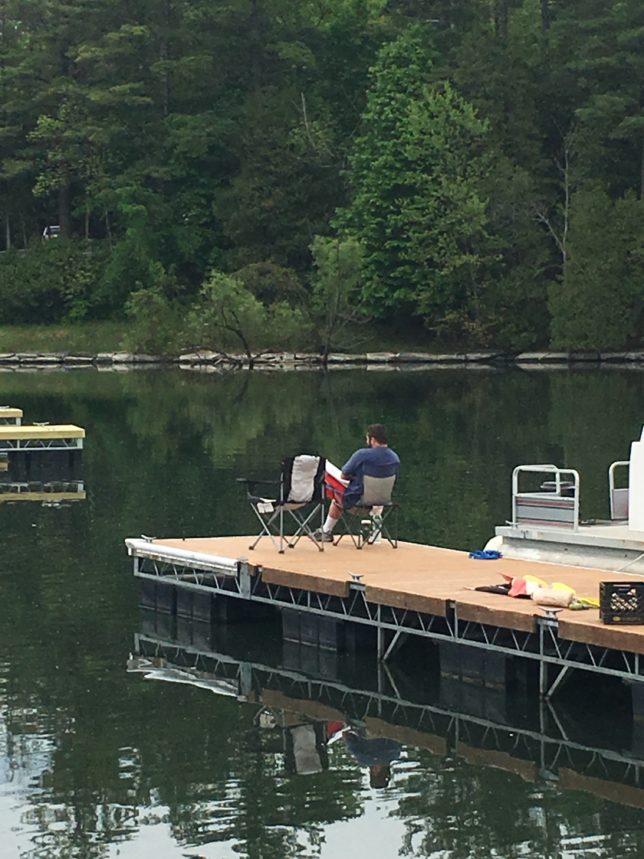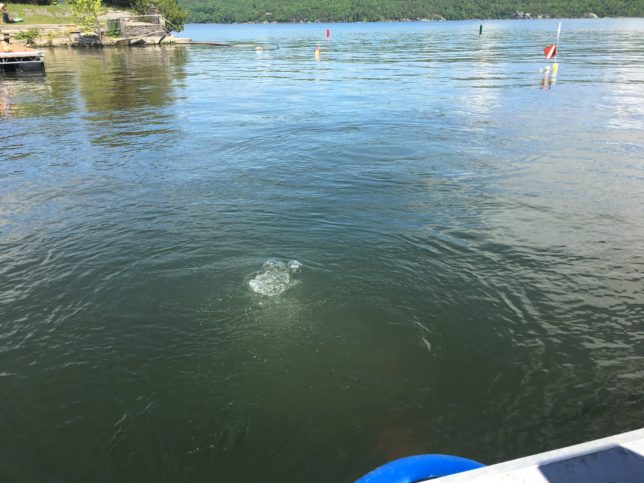![]() Last Friday saw the culmination of three weeks of underwater archaeological work with students from the 2017 Nautical Archaeology Field School. I can’t overstate what a pleasure it was to work with Rich and Scott for the past few weeks. These two gentleman brought an impressive amount of dive capability and skill to our project and did so with an amazing attitude and a fantastic work ethic, despite the less than stellar conditions we endured both above and below water.
Last Friday saw the culmination of three weeks of underwater archaeological work with students from the 2017 Nautical Archaeology Field School. I can’t overstate what a pleasure it was to work with Rich and Scott for the past few weeks. These two gentleman brought an impressive amount of dive capability and skill to our project and did so with an amazing attitude and a fantastic work ethic, despite the less than stellar conditions we endured both above and below water.
Rich and Scott worked with us to gain a better understanding of a shipwreck located right in Basin Harbor. While this vessel has been known to Basin Harbor Staff and LCMM divers for many years it has never been identified or studied in any great detail. The goal of the 2017 Field School was to rectify that situation. But, after three weeks of hard work and dozens of dives the wreck still remains something of a mystery.
 By conducting selected excavation of portions of the wreck’s structure, we now have a much better idea of how it was built but that has failed to reveal the identity of the boat or even to clearly indicate what type of vessel the remains represent. This is a site of contradictions: we found handmade nails that suggest an early 19th century date. But we also found thread bolts that suggest a later 19th century date. We have located NO mast steps on the wreckage, which suggest maybe it was a steam boat, but we have found none of the engine bed timbers and sister keelsons that are typical of steamboat construction. Initial assumptions were that it probably represented another canal boat wreck on the lake due to its 90 foot length, but excavation across the wreck found that it is curved in section and that there was no chine log present, both facts that rule out the canal boat theory…
By conducting selected excavation of portions of the wreck’s structure, we now have a much better idea of how it was built but that has failed to reveal the identity of the boat or even to clearly indicate what type of vessel the remains represent. This is a site of contradictions: we found handmade nails that suggest an early 19th century date. But we also found thread bolts that suggest a later 19th century date. We have located NO mast steps on the wreckage, which suggest maybe it was a steam boat, but we have found none of the engine bed timbers and sister keelsons that are typical of steamboat construction. Initial assumptions were that it probably represented another canal boat wreck on the lake due to its 90 foot length, but excavation across the wreck found that it is curved in section and that there was no chine log present, both facts that rule out the canal boat theory…
Frankly I’m a bit baffled.
But, as we continue to post process the data collected in 2017, I find that, in addition to being confused and maybe a little frustrated, the archaeological team is also more motivated than ever to continue to work on this site in the future and to finally answer the manifold questions that remain about this vessel and its origins.

So while I am still unclear on the identity of the wreck we worked, what I have no doubt about is my deep appreciation for the wonderful students that I had the opportunity to work with and for the amazing support for the project that came from many angles. Internally, Allyson and Jenny (the LCMM archaeological team) were fantastic colleagues to work with. Allyson arranged and coordinated the entire program from beginning to end and did so with an impressively positive attitude. Jenny insured that dive operations were carried out in a safe and efficient manner as well as bringing her extensive archaeological experience to bear on the questions raised during our field work. Bob Beach and the staff of the Basin Harbor Resort were incredibly welcoming and supported our efforts in every way possible. Penny Beach also stopped by the project nearly every day and always had words of encouragement and support for the crew. The staff at the Waterfront Dive Shop supplied us with equipment and tank fills over the course of the project, as well as letting Abigail visit the site and dive with us for a couple of days. Art Cohn shared his extensive knowledge on the legal complexities of shipwreck management with the students. And the LCMM staff made the students feel right at home on campus and assisted with our public presentation.
All in all it was another wonderful field school, and as usual it was the people and wrecks that made it such a great experience for everyone involved. Keep your eyes out for results of our continuing efforts to understand the Basin Harbor wreck and its story.
Chris Sabick
LCMM Archaeological Director
